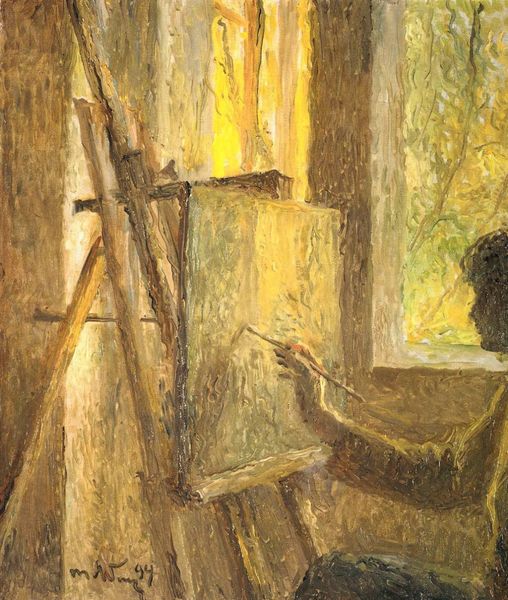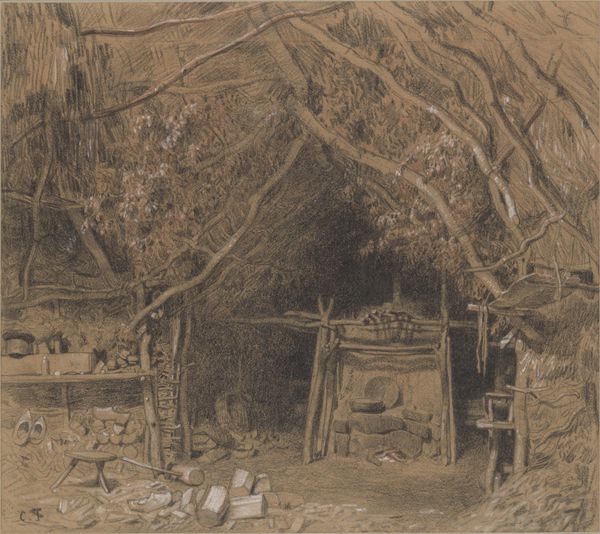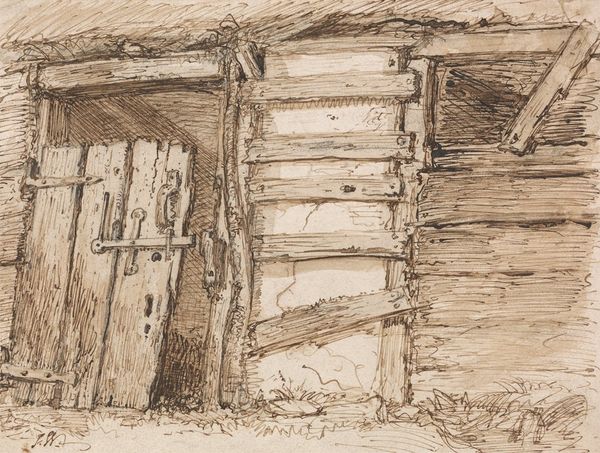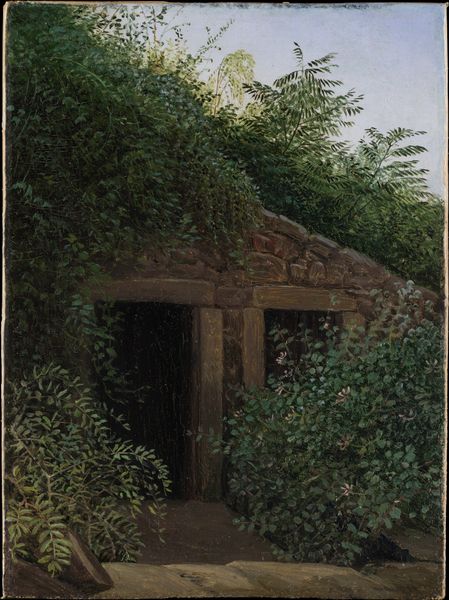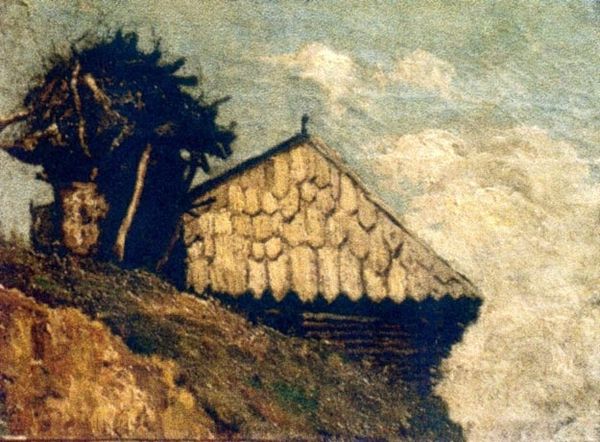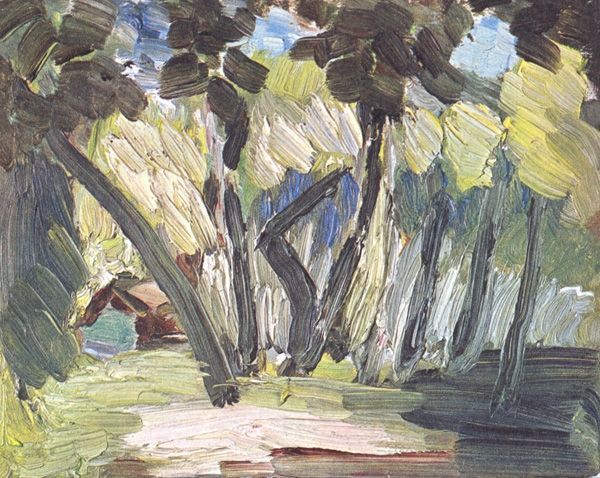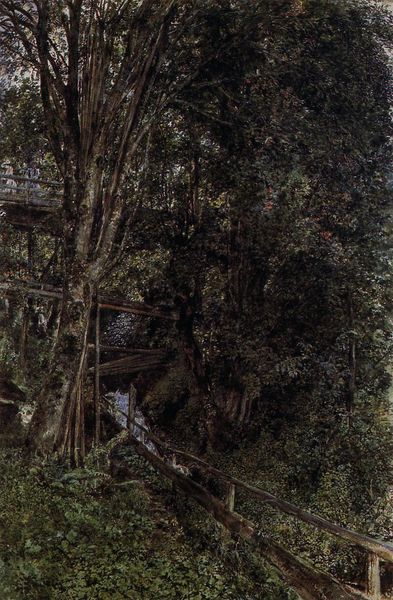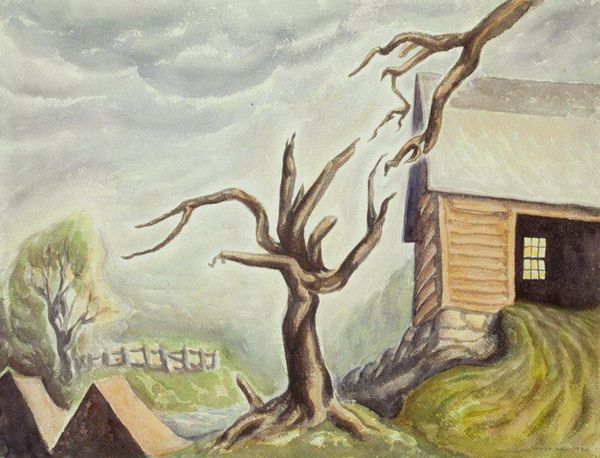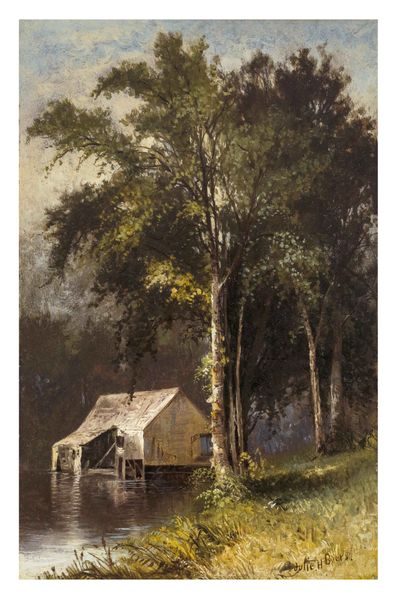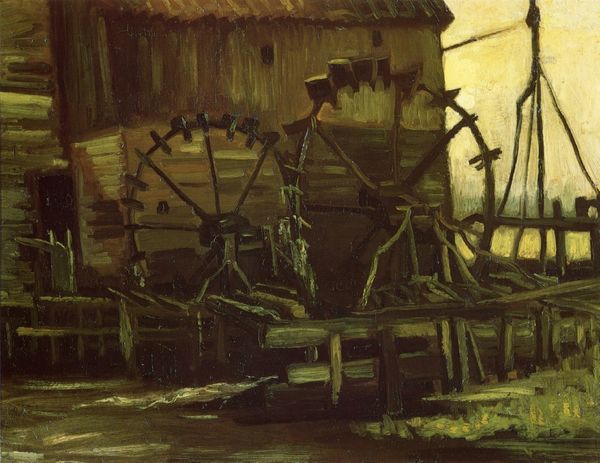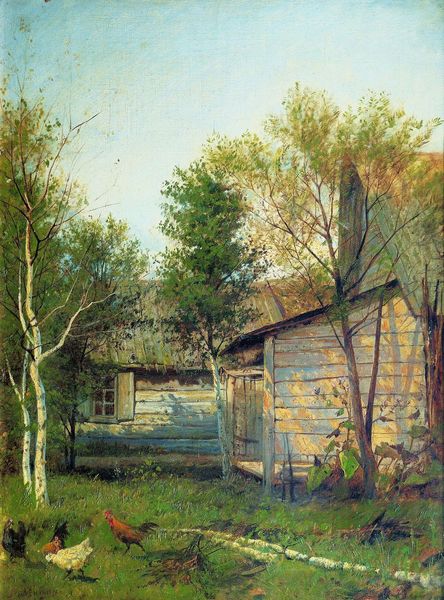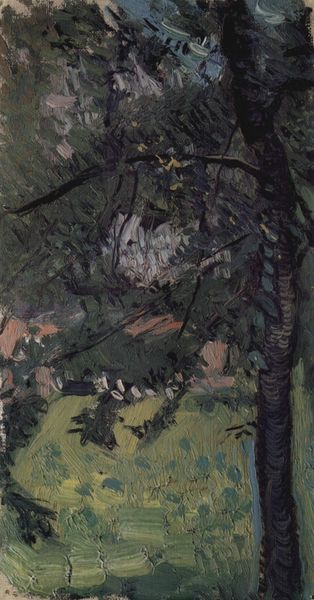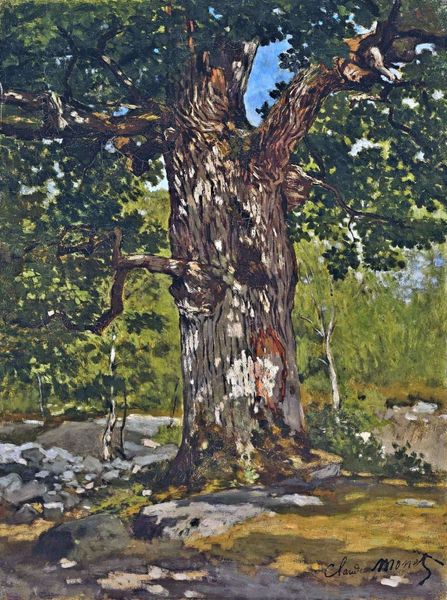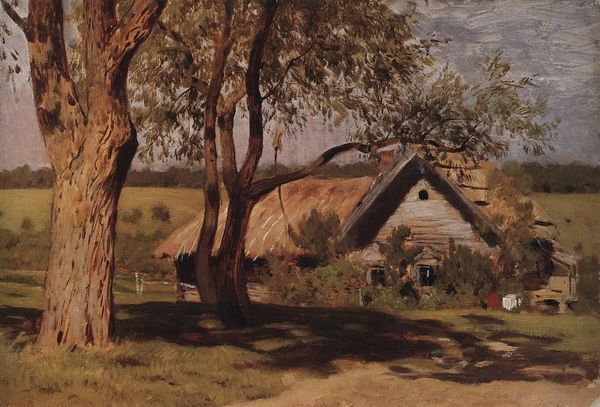
oil-paint
#
oil-paint
#
landscape
#
oil painting
#
realism
Copyright: Public domain
Curator: Here we have John Absolon’s “Well at Ruisseauville near Agincourt,” held here at the V&A. Editor: It’s strikingly bleak, isn't it? That drab palette. There's an oppressive quality about it. It gives a feeling of desolation. Curator: It's a landscape piece rendered in oils. Consider how the setting itself—Ruisseauville near Agincourt—isn't incidental. Agincourt. It resonates with histories of conflict, particularly for the English. We can situate this well within that historical framework. Was it vital to that community? What purpose did it serve in their survival through war? Editor: My thoughts immediately jump to the labour of its creation. The artist obviously foregrounds material: look at those roughly hewn timbers! The rough and weathered structure screams a brutal hand-made utility. Its design speaks to necessity and access to vital resources. This makes me wonder about the division of labour in building and maintaining such infrastructure. Curator: Absolutely. Labor, often invisible, becomes central when we consider the materiality and its relation to gender and class. Who maintained access to it? We have to acknowledge how systems of power are built into such a basic infrastructure in 19th-century rural France. Water access determined livelihoods, hygiene, and very survival, thus creating the backdrop for social justice matters, particularly for women and those who have traditionally worked for the lowest wages. Editor: And that crude roof slanting. You see both design ingenuity and utter necessity. I also think of water: How did communities access this life-giving material? And to what extent does access determine power relationships? How has this well shaped its own rural area? It’s a narrative constructed as much from planks as paint. Curator: Reflecting on it this way reframes a seemingly simple landscape scene into an artifact loaded with history, culture, and class struggle, prompting crucial questions about marginalisation in our contemporary world. Editor: Seeing the raw, hand-crafted well offers so much scope to appreciate labor and history inherent in providing fundamental resources, doesn't it?
Comments
No comments
Be the first to comment and join the conversation on the ultimate creative platform.
